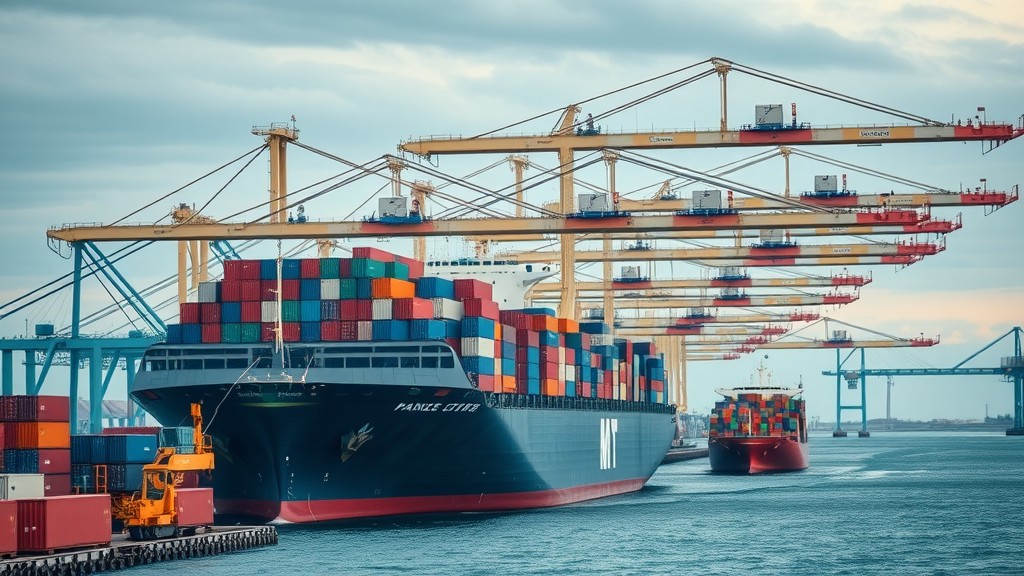- Did you know that up to 70% of business sales fall through due to oversight or errors during the transfer process? Discover why business transfer agents are critical allies in safeguarding your business sale, and how you can avoid these costly pitfalls with the right expertise on your side.
Understanding Business Transfer Agents: Essential Roles in the Business Transfer Process

- Define the role of business transfer agents and transfer agents in modern business transfers. Explain their place within business sale transactions and the impact on overall business transfer outcomes. Include overview of transfer agent, business transfer agent, and business broker positions.
Business transfer agents are specialized professionals who guide business owners through the complex maze of selling or transferring their business. Unlike a real estate or stock transfer agent who primarily deals in property or equity, a business transfer agent supports the entire process of moving ownership from seller to buyer in various types of businesses. They act as the linchpin connecting multiple parties—buyers, sellers, attorneys, accountants, and sometimes even regulators—to facilitate a seamless business transfer.
These experts handle critical tasks such as preparing legal documentation, conducting due diligence, managing seller-buyer communication, and ensuring regulatory compliance at every step. Their attention to detail helps reduce errors that can halt a business sale or cause major delays. In modern business transfers, business transfer agents often work alongside business brokers and play a vital role in reducing the common pitfalls that sink up to 70% of deals. Their oversight and expertise are crucial for both sellers and buyers aiming for the best possible outcome in mergers and acquisitions or any business sale transaction.
Comparing their roles, a business transfer agent primarily focuses on the technical and procedural aspects of ownership transition, managing everything from contracts to compliance. In contrast, business brokers are more concerned with marketing the business, finding potential buyers, and negotiating sales. Both roles, however, are complementary and essential throughout the business transfer process .
What You'll Gain from This Guide on Business Transfer Agents
- Understand the functions of business transfer agents;
- Learn to identify common transfer agent pitfalls;
- Discover best practices to ensure a seamless business transfer;
- Receive guidance on selecting professional business brokers and transfer agents.
This comprehensive guide provides business owners, entrepreneurs, and stakeholders with actionable insights into the world of business transfer agents . By the end, you’ll not only understand how to avoid crucial mistakes but also how to secure a smooth, compliant, and profitable business sale.
You’ll also be empowered to recognize the warning signs of questionable agents, understand fee structures, and prepare yourself for the evolving landscape of business transfers in the digital age. By learning what questions to ask and qualities to seek, you can make informed decisions that maximize your business’s value and minimize risk during the sale process .
Business Transfer Agents Versus Business Brokers: A Crucial Comparison
- Highlight differences between business transfer agents and business brokers. Detail overlaps in business brokerage, business transfer, and business sale roles. Discuss scenarios where both transfer agents and business brokers act in partnership or separately.
A common misconception is that business brokers and business transfer agents are interchangeable professionals. While both are integral to the buying and selling of businesses, their core roles diverge. A business broker acts as an intermediary to advertise it for sale , find qualified buyers, and negotiate terms. Meanwhile, transfer agents ensure that the complicated legal, financial, and compliance tasks necessary for the actual transfer of ownership proceed smoothly and according to law.
The overlap happens in scenarios of small business sales, where a single professional may serve both roles—especially in less regulated transactions. However, during larger or more complex deals, it’s common to find both business brokers securing buyers and managing negotiations, with transfer agents handling the technical transition, legal filings, and document validation. Effective communication and collaboration between both ensure that sellers and buyers are aligned at every step.
In essence, the business broker brings the parties together, and the business transfer agent ensures the deal closes correctly and legally. Understanding these key differences empowers business owners to build the right team for their unique transaction.
Why Successful Business Transfers Depend on Skilled Transfer Agents
- Breakdown of business transfer agent contributions: legal compliance, due diligence, risk management, and seller-buyer communications. Discuss challenges in business transfer that only seasoned transfer agents and business brokers can resolve.
The success of a business sale often hinges on the skills, vigilance, and experience of the business transfer agent . They play essential roles in legal compliance—drafting, reviewing, and filing the required documents. This ensures every step of the sale meets regulatory standards, which is particularly vital for industries subject to strict licensing or certification requirements.
Seasoned transfer agents oversee thorough due diligence—meticulously verifying the business’s financials, ownership, and operational liabilities. Without this step, hidden issues such as unpaid taxes, unresolved contracts, or litigations may surface after the transfer, resulting in costly complications for both sellers and buyers. The agent acts as a safeguard, evaluating all angles to ensure a fair and risk-mitigated transaction.
Another vital contribution is robust seller-buyer communications . Transfer agents mediate between parties, translating complex legal or financial jargon into clear, actionable guidance. For both parties, having an expert interpret these technicalities helps prevent last-minute surprises, disputes, or failed deals.
Critical Mistakes to Avoid When Selecting a Business Transfer Agent

- List the top five transfer agent pitfalls such as unclear service contracts, insufficient due diligence, omitting business valuation, failing to verify credentials, and underestimating transfer agent fees.
Choosing the wrong business transfer agent can introduce serious risks into your business transfer . To protect your interests, it’s vital to avoid these five common pitfalls:
- Unclear Service Contracts: Some agents offer contracts that are vaguely worded about services, responsibilities, and timelines. This ambiguity can lead to unmet expectations or disputes as the sale process unfolds.
- Insufficient Due Diligence: If your transfer agent rushes or skips the deep financial, legal, and operational review, undiscovered liabilities may threaten the entire transaction.
- Omitting Business Valuation: Failing to conduct an objective valuation can result in underpricing your business or setting an unrealistic asking price, jeopardizing negotiations with potential buyers.
- Failure to Verify Credentials: Some individuals market themselves as transfer agents yet lack proper licensing, regulatory compliance, or proven experience in business sales .
- Underestimating Transfer Agent Fees: Not understanding the fee structure or hidden charges can eat into sale proceeds and cause unwelcome surprises post-sale.
Avoiding these pitfalls requires proactive research, due diligence, and open communication before you sign with any agent or firm.
Step-by-Step Guide: The Complete Business Transfer Agent Process
- From initial business valuation and due diligence to closing business sale contracts: key actions and timelines for business transfer agents and business brokers. Stress importance of smooth communication and documentation.
The business transfer process is a multi-phase journey demanding rigorous attention. Here’s how business transfer agents and business brokers steer it from start to finish:
- Initial Business Valuation: The process starts with a comprehensive valuation to establish a fair market price–often performed with a business broker or an independent third party.
- Due Diligence: Transfer agents review legal, operational, and financial documents, uncovering any hidden risks or unresolved issues.
- Preparing Documentation: All required documents—contracts, asset lists, regulatory filings—must be assembled, reviewed, and approved by both seller and buyer teams.
- Buyer Search and Negotiation: The business broker networks with potential buyers, manages offers, and negotiates on behalf of the seller, while keeping the transfer agent informed at every step.
- Contract Signing and Closing: Once an agreement is reached, the transfer agent ensures all documents are executed, regulatory approvals are obtained, and funds are securely transferred, leading to a successful business sale.
Throughout the entire process , clear communication and diligent documentation are essential, minimizing the likelihood of disputes and keeping the sale on track.
Transfer Agent Fees and Cost Structures Explained
- Comprehensive overview: What is a transfer agent fee? Include typical fee ranges, factors influencing costs for business transfer agents, and potential hidden charges in the business transfer process.
Transfer agent fees can significantly impact your sale’s net proceeds. These fees cover the services that ensure secure, compliant, and accurate transfers of ownership. Costs range widely based on the transaction’s complexity, the types of businesses involved, service levels required, and even regional market rates.
Simple small business transfers may command flat fees from $2,000 to $8,000, while more intricate mergers and acquisitions see commissions ranging from 1% to 5% of the sale of the business . It’s important to scrutinize contracts for hidden charges related to expedited filings, legal consultations, or post-sale obligations, which can inflate your final bill unexpectedly. Always insist on an itemized fee structure from your transfer agent or business transfer agent before engagement.
Below, a comparison table offers a breakdown of how transfer agent fees can vary according to agent type, service package, and location.
| Transfer Agent Type | Service Package | Geography | Fee Range (USD) |
|---|---|---|---|
| Independent Transfer Agent | Basic Compliance | Midwest (US) | $2,000 - $4,500 |
| Business Broker as Transfer Agent | Full Service (Valuation, Due Diligence) | East Coast (US) | 1.5% - 4% of Sale Price |
| Corporate Transfer Agent Firm | Mergers & Acquisitions | Western Europe | 2% - 5% of Sale Price |
| Specialized Small Business Agent | Asset Transfer Only | Australia/New Zealand | $3,500 - $7,000 |
Top Transfer Agent and Business Broker Qualities: What to Look for
- Essential credentials, years of experience, regulatory compliance, client testimonials, and business brokerage specializations. Role of transfer agents in specialized business sales.
When selecting business transfer agents or business brokers , prioritize individuals who hold verifiable certifications, are compliant with local and industry-specific regulations, and have a proven history of successful transactions in your sector. Client testimonials and case studies serve as social proof of reliability and skill.
Look for experience in your industry—an agent who has facilitated successful business sale transactions for other companies similar to yours will understand the nuances of your business and its regulatory landscape. Consider specialization as well; an agent with a background in mergers and acquisitions can bring more sophisticated strategies to larger companies, while small business owners may benefit from agents experienced with family-run or franchise transfers.
Regulatory compliance isn’t just about licenses. It includes a demonstrated track record of adhering to updated laws, filing the correct documentation, and following best practices in business brokerage. These qualities directly influence the smoothness and profitability of your business transfer.
“The right business transfer agent can mean the difference between a seamless sale and a costly mistake.” – Industry Expert
Red Flags: How to Spot Questionable Transfer Agents and Avoid Pitfalls

- Warning signs your transfer agent might not be reputable, including lack of transparency, vague fee structures, and poor track records in business transfers.
Selecting a business transfer agent requires thorough vigilance. Red flags to watch for include agents who are evasive about their experience or the sale process. If a transfer agent offers a vague or hidden fee structure, chances are you’ll encounter unexpected costs later.
Lack of transparency is another warning sign. Reliable agents willingly supply references, interactive discussions on previous sales, and clear documentation outlining their role and deliverables. If your questions are met with defensiveness or incomplete answers, this may indicate a lack of experience or, worse, an intent to mislead.
Finally, beware of poor reviews, complaints on regulatory bodies, or a pattern of failed or disputed transfers. Choosing a questionable transfer agent can lead to delays, legal exposure, and financial loss, so always verify credentials and reputation before signing any agreements.
Case Studies: Business Transfer Successes (and Failures) with Transfer Agents
- Real-world examples where skilled business transfer agents saved deals, versus costly failures due to poor agent oversight. Analysis of successful business sale processes with business transfer agents involved.
Success Story: A regional technology firm engaged a certified business transfer agent and broker team to sell their business. The agent’s precise document review uncovered a hidden tax obligation from a defunct product line. By proactively resolving the issue, they saved the deal, allowing the business owner to confidently close and transfer operations with zero post-sale liabilities.
Failure Example: In contrast, a small restaurant owner chose an unlicensed transfer agent based solely on low fees. The agent omitted several vendor contracts and failed to transfer key licenses, resulting in the new owner halting operations and seeking legal damages from the seller.
Takeaway: These case studies illustrate that an experienced business transfer agent is indispensable for managing the critical details that make or break business sales.
How to Select the Best Business Transfer Agents and Business Brokers
- Stepwise list for vetting potential transfer agents and business brokers. Importance of interviews, service reviews, and clear communication during the pre-engagement phase.
- Request proof of license, credentials, and recent successful business sales relevant to your industry.
- Interview at least two or three potential agents or brokers, comparing service approaches and asking scenario-based questions about challenges they’ve faced.
- Read client testimonials and service reviews, examining any complaints or accolades regarding technical skills and communication.
- Insist on a detailed written service agreement outlining responsibilities, milestones, and fee structure.
- Assess communication style—your agent should explain processes transparently and respond quickly to your questions.
Taking these steps will help you select a business transfer agent or business broker committed to your best interests.
Checklist: Questions to Ask Before Hiring a Business Transfer Agent or Broker
- What experience do you have with similar types of businesses?
- Can you provide references for recent successful business sales?
- What is included in your service agreement and fee structure?
- How do you handle unexpected legal or compliance issues?
- Are you licensed and regulated in this jurisdiction?
Commonly Overlooked Legal and Regulatory Steps in Business Transfers

- Key compliance tasks brokers and transfer agents must handle, including document preparation, licensing transfer, and post-sale obligations for both sellers and buyers.
The legal and regulatory landscape around business transfer is intricate, with requirements differing widely by industry and location. Crucial steps often missed include preparing and filing documents for asset or stock transfer, ensuring that all necessary licenses and registrations are properly reassigned, and confirming that all regulatory notices have been completed.
Both the business transfer agent and broker must verify that the sale terms satisfy federal, state, or local compliance, address outstanding personnel or vendor contracts, and oversee fulfillment of escrow or hold-back agreements. Failing to transfer licenses or meet post-sale regulatory milestones can expose both parties to fines, lawsuits, or operational shutdown.
Consulting with an experienced legal advisor alongside your transfer agent helps ensure a fully compliant transaction—protecting sellers and buyers from future risk.
Future Trends: The Evolving Role of Business Transfer Agents in Digital Business Transfer
- How technology and regulation are shaping transfer agent and business broker responsibilities in digital-first environments.

As business transactions increasingly move online, business transfer agents and business brokers must adapt to changes in technology and evolving regulations. Use of secure digital signature solutions, cloud-based documentation, and real-time compliance checks is becoming standard, streamlining the entire business sale process.
Furthermore, regulatory authorities now expect digital integrations and audit trails for every phase of ownership transfer, from valuation to closing. With virtual datarooms and encrypted communications, agents now serve as both technical and legal stewards, ensuring data security alongside procedural accuracy.
The evolving landscape emphasizes the need for business transfer professionals who are fluent in digital compliance, cybersecurity, and cross-jurisdictional regulations—future-proofing their value to clients in a digital-first world.
FAQ: Navigating the World of Business Transfer Agents
- Quick reference for frequent queries about business transfer agents, business sales, and the transfer agent process.
What is a transfer agent in business?
- A transfer agent in business handles the changing of ownership and legal documentation when a business or assets are sold or transferred, ensuring compliance, accuracy, and procedural integrity within each business sale.
Who are the top 5 transfer agents?
- The top 5 transfer agents in the business world include Computershare, American Stock Transfer & Trust Company, Broadridge, EQ Shareowner Services, and Continental Stock Transfer & Trust Company.
What is a transfer agent fee?
- Transfer agent fees are the charges levied by a business transfer agent for facilitating the secure transfer of business ownership. Fees vary based on transaction complexity, size, and service package.
Do private companies need a transfer agent?
- While private companies are not legally mandated to hire transfer agents, involving professional business transfer agents is advised to avoid errors and legal complications during a business sale.
Expert Recommendations: Maximizing Business Sale Value with the Right Transfer Agent
- Tips from industry professionals and business brokers on securing the most favorable possible outcome from your business sale by leveraging experienced transfer agents and minimizing transfer agent errors.
To maximize the value of your business sale, industry experts recommend engaging a business transfer agent early in the process. This allows time for proper valuation, robust due diligence, and effective negotiation. Always verify the agent’s expertise in your specific business sector, insist on transparent contract and fee disclosures, and demand regular progress updates.
Additionally, consider integrating your agent into strategic planning meetings alongside your accountant and legal counsel. This collaborative approach ensures all parties are aligned for a successful, profitable, and issue-free transfer.
Key Takeaways for Business Transfer Agents and Avoiding Transfer Pitfalls
- Summarize actionable steps, recurring themes, and practical tips to optimize every business sale and business transfer involving transfer agents and business brokers.
- Invest time in thorough due diligence and agent reviews before engagement.
- Insist on clear, transparent fee structures and contracts from your business transfer agent.
- Seek out experienced agents and brokers with proven industry track records and compliance expertise.
- Embrace the benefits of digital tools for secure, efficient business sales.
- Ask pointed questions and trust your instincts—red flags should never be ignored.
Your Next Steps: Secure Your Business Sale with a Trusted Business Transfer Agent

- Contact a reputable business transfer agent or business broker today to discuss your upcoming business sale. Ensure your transfer is smooth, compliant, and profitable with expert guidance.
Act now—partnering with the right business transfer agent is your single best strategy to secure a successful and lucrative business transfer.
 Add Row
Add Row  Add
Add 




Write A Comment